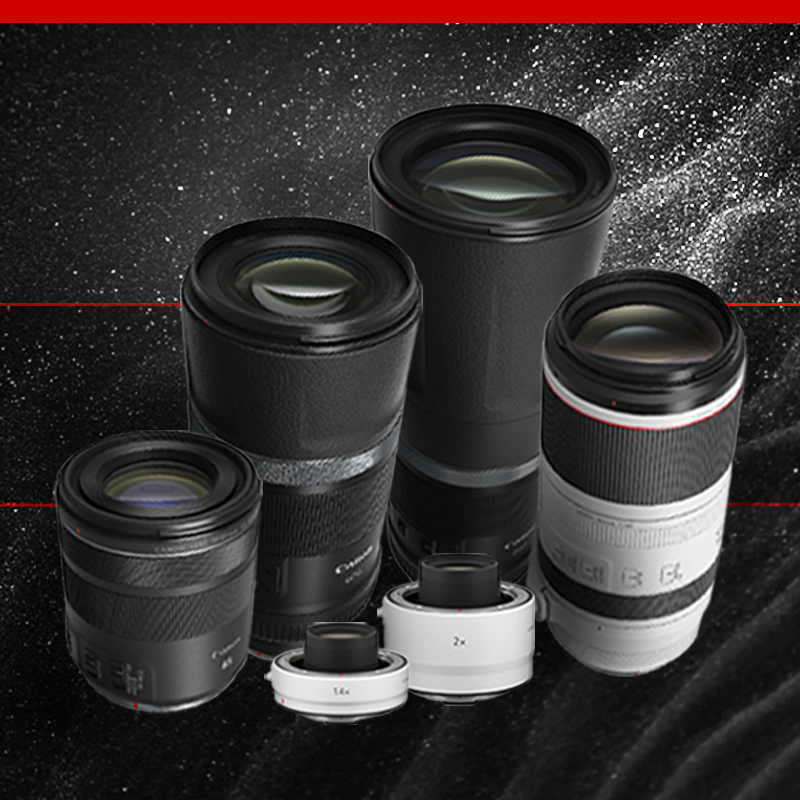Last week, Canon added quite the addition to its mirrorless lineup with two new full-frame cameras and six new lenses. Although most of the excitement has been geared toward the new EOS R5 and R6 cameras, we want to spotlight the recent lens additions and what they add to the current RF lineup.

Canon so far has been an overpowering force when it has come to its new RF lenses. Not to mention, they have done a fantastic job in terms of lossless compatibility when using EF lenses with the RF mount adapter. We haven't seen much if any, loss in quality that you might see when using an EF lens due to a converter.
The new RF lenses are at the heart of the mirrorless system. Camera bodies will come and go, lenses, on the other hand, have a much longer life span. The entire system is built around the optics. The engineers at Canon now have the ability to design lenses that they haven't been able to before and evidence of that was with the RF 28-70 F2. So let's take a look at these new RF lenses.
RF 85mm F2
Although the RF 85mm F2 IS STM lens is not an L series lens, it will still remain extremely sharp. Not to mention, it is almost half the size of the RF 85mm F1.2 L series lens and about a quarter of the price. At only $599, this lens will satisfy the need of photographers from amateur all the way to the working professional. It comes with a 9-blade aperture, 5 stops of image stabilization and macro capabilities with 1.15 ft as the minimum focus distance. Needless to say, with the prime focal range for portraits, this will be a phenomenal lens for weddings. The RF 85mm F2 will be available on October 31st.
RF 100-500mm
The new RF 100-500mm F4.5-7.1 IS USM L series lens has been highly anticipated and we've had several customers ask us when Canon was going to come out with the mirrorless version of the EF 100-400. Well, here it is and even better than we hoped with an additional 100mm. This lens will be as equal to if not better in image quality and it's about a half-pound lighter than the EF 100-400. It comes with 5-stops of image stabilization compared to 4 in the 100-400.
Even though it's no macro lens it has a close focusing ability of a 3ft minimum at 100mm and 3.94ft at 500mm. It's powered by two nano USM focusing motors, making focusing virtually silent. When you use this lens in video mode you can physically use the internal microphone, which is typically the benchmark for lenses to test how silent they are. This is a big win for videographers that want to minimize the audible noise from the lens. There are also seven UD lens elements, which are designed to reduce chromatic aberration. The 100-500mm will be available on September 30th for $2,699.
RF 600mm F11 & RF 800mm F11
These next two lenses are going to suit the needs of a lot of photographers looking to get into super-telephoto photography that can't afford the typical $13,000 lenses like the EF 600mm F4 or 800mm F5.6. These are not necessarily suited for the professional photographer. Both the RF 600mm and RF 800mm have a constant F11 aperture and fall under the Diffractive Optics (DO) category. The other two lenses currently in this category are the 70-300mm and the 400mm F4 version II. The whole goal of the diffractive optic is to lighten the load and lessen the footprint or in other words, making the lens smaller. One major benefit of a DO lens is it basically eliminates chromatic aberration. Although, it is possible to get flare when you have highlights or backlight coming in from your subject into the lens.
What makes these lenses great is that they are very compact and great for storing. Compared to the EF 600mm F4 III, this new lens is 4.6 lb lighter. In regards to the 800mm lens, the 800mm F11 is 7.14 lbs lighter. Due to the F11 aperture, these lenses require more light and will work better in daylight conditions rather than dim lighting. High ISO settings may be the name of the game when it comes to these lenses, but Canon mirrorless cameras are surely capable of high image quality at even high ISOs. One thing to consider is the 600mm and 800mm are not capable of coordinated I.S. in conjunction with the in-body stabilization. Both lenses are available on July 30th. The RF 600mm F11 will be $699 and the RF 800mm F11 will be $899.
RF 1.4x & 2x Extenders
The telextenders are very similar to the EF counterparts with the RF 1.4x having one stop of light lost and the RF 2x having two stops of light lost. They are slightly heavier than the EF version, with about an ounce more on the 1.4x and about an ounce and a half more on the 2x. They are compatible right now with the lenses mentioned above—the RF 100-500mm, 600mm and 800mm. The telextenders are not compatible with the 70-200 F2.8. When using it on the 100-500mm lens, the zoom range will be limited to 300-500mm. Autofocus will slow down when you use these for the advantage of sharp focus. Both extenders will be available on July 30th. The 1.4x will run for $499 and the 2x will be $599.







